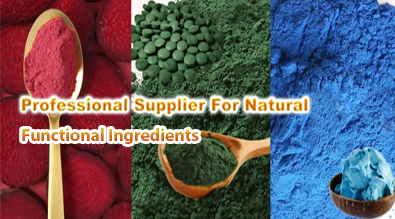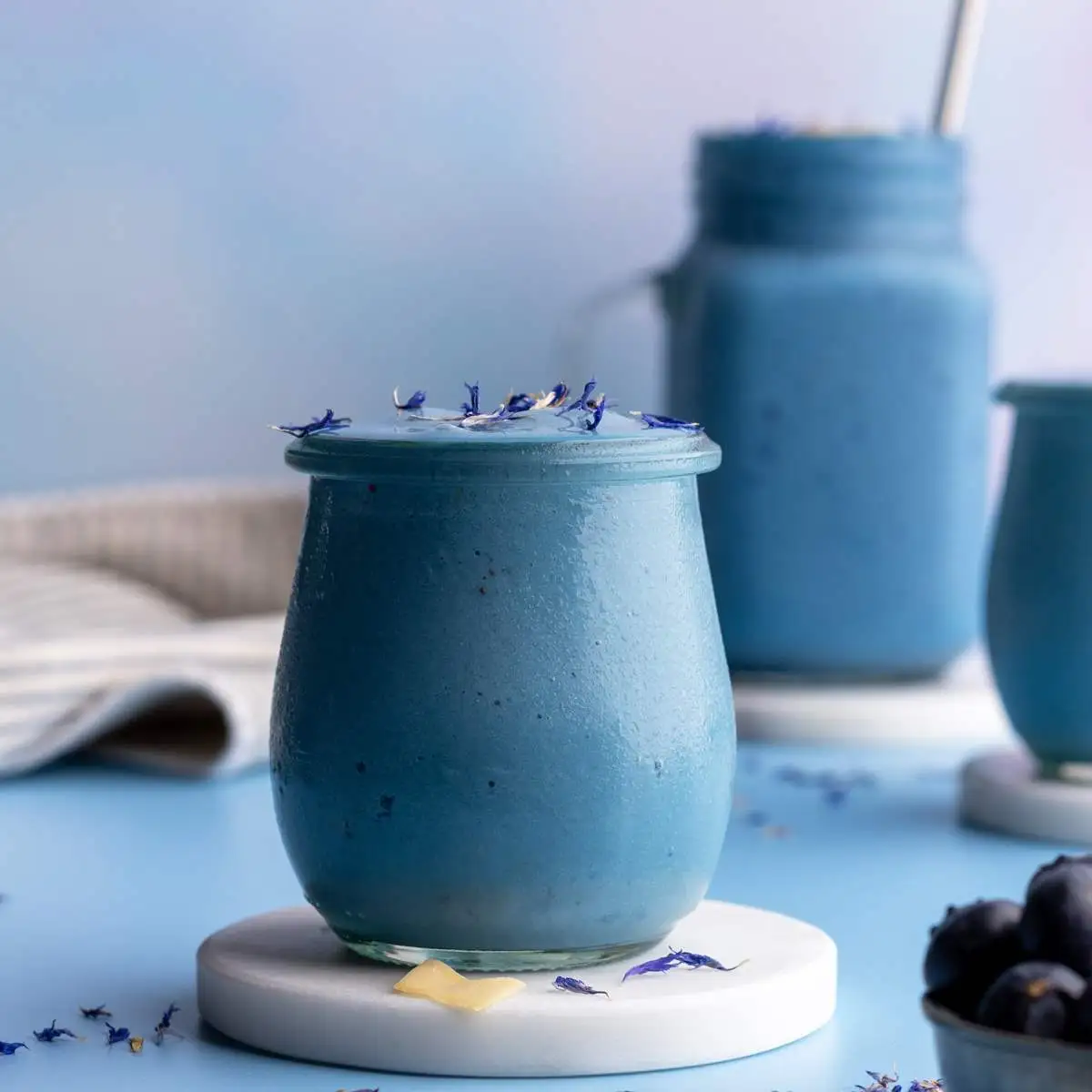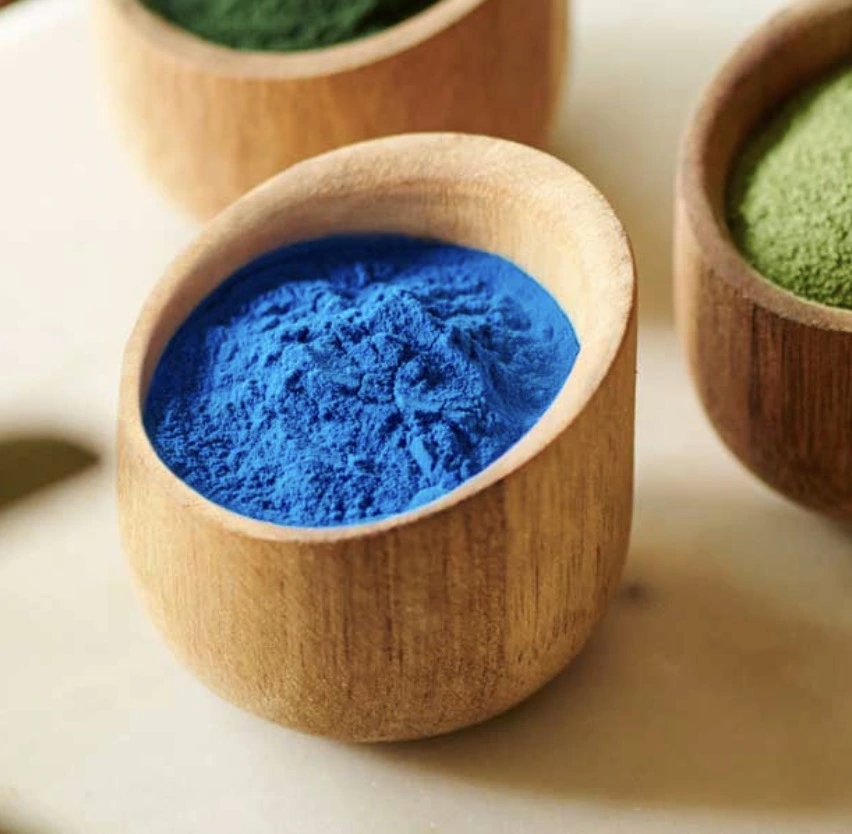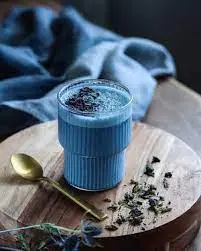What is astaxanthin made from?
Astaxanthin, a powerful antioxidant and member of the carotenoid family, has gained significant attention in recent years for its potential health benefits. But have you ever wondered where this remarkable compound comes from? In this comprehensive guide, we'll explore the various sources of astaxanthin, delve into its benefits, and uncover the fascinating process of its extraction and production.

Natural Sources of Astaxanthin Explained
Astaxanthin is found in a variety of natural sources, each contributing to its availability and potential applications in different industries. Let's examine the primary sources of this potent antioxidant:
Microalgae: The Powerhouse of Astaxanthin Production
Microalgae, particularly Haematococcus pluvialis, are the most prolific producers of natural astaxanthin. These microscopic organisms have evolved to synthesize product as a protective mechanism against environmental stressors. When exposed to harsh conditions such as intense sunlight or nutrient deprivation, H. pluvialis dramatically increases its astaxanthin production, turning from green to deep red. This unique ability makes H. pluvialis the preferred source for commercial astaxanthin production, yielding up to 5% of its dry weight in astaxanthin.
Marine Life: Nature's Astaxanthin Accumulators
Various marine animals are notable sources of astaxanthin, accumulating the compound through their diet. Salmon, trout, and other pink-fleshed fish obtain astaxanthin by consuming smaller organisms like krill and shrimp. These crustaceans, in turn, acquire astaxanthin from the microalgae they consume. The product content in wild salmon can range from 26-38 mg/kg of flesh, making them a significant dietary source for humans and other predators. However, farmed salmon typically contain lower levels, necessitating astaxanthin supplementation in their feed to achieve the characteristic pink color.
Yeast: An Alternative Astaxanthin Source
Certain species of yeast, such as Xanthophyllomyces dendrorhous (formerly known as Phaffia rhodozyma), can also produce astaxanthin. While not as prolific as H. pluvialis, these yeasts offer an alternative source for astaxanthin production. The astaxanthin content in X. dendrorhous can reach up to 0.5% of its dry weight, making it a viable option for some commercial applications. The advantage of yeast-based production lies in the potential for large-scale fermentation processes, which can be more easily controlled than algae cultivation.

Benefits of Astaxanthin from Microalgae
Astaxanthin derived from microalgae, particularly H. pluvialis, offers a range of benefits that make it a preferred source for both research and commercial applications. Let's explore these advantages in detail:
Superior Antioxidant Properties
Astaxanthin from microalgae is renowned for its exceptional antioxidant capabilities. Studies have shown that it can neutralize free radicals up to 1000 times more effectively than vitamin E, a well-known antioxidant. This potent antioxidant activity translates to numerous potential health benefits, including reduced oxidative stress, improved cardiovascular health, and enhanced immune function. The unique molecular structure of product allows it to span cell membranes, providing protection both inside and outside the cell, a feature not shared by many other antioxidants.
Bioavailability and Absorption
Microalgae-derived astaxanthin demonstrates superior bioavailability compared to synthetic alternatives. The natural esterified form found in H. pluvialis is more easily absorbed by the body, leading to higher blood plasma concentrations. This enhanced bioavailability ensures that a greater proportion of the consumed astaxanthin reaches its target tissues, maximizing its potential health benefits. Additionally, the natural form of astaxanthin from microalgae is often combined with other beneficial compounds like omega-3 fatty acids, which may further enhance its absorption and efficacy.
Environmentally Sustainable Production
Astaxanthin production from microalgae represents a sustainable and environmentally friendly approach. Unlike synthetic production methods that rely on petrochemicals, microalgae cultivation harnesses the power of photosynthesis, requiring only sunlight, water, and nutrients. This process has a significantly lower carbon footprint and reduces reliance on non-renewable resources. Furthermore, microalgae cultivation can be integrated with wastewater treatment systems, offering additional environmental benefits by removing excess nutrients from water bodies.

How Astaxanthin is Extracted and Produced?
The process of extracting and producing astaxanthin from natural sources, particularly from H. pluvialis microalgae, involves several sophisticated steps. Let's explore this fascinating journey from cultivation to final product:
Cultivation of Astaxanthin-Producing Microalgae
The production process begins with the careful cultivation of H. pluvialis. This involves two distinct phases: a green phase where the algae grow and multiply, followed by a red phase where astaxanthin production is induced. During the green phase, optimal conditions for algal growth are maintained, including precise control of light, temperature, and nutrients. Once sufficient biomass is achieved, the algae are subjected to stress conditions such as high light intensity, nutrient deprivation, or salt stress. This triggers the transformation into the red phase, where the algae produce and accumulate astaxanthin as a protective mechanism.
Harvesting and Cell Disruption
After the algae have accumulated sufficient astaxanthin, they are harvested using techniques such as centrifugation or filtration. The harvested biomass is then subjected to cell disruption methods to break open the tough cell walls of H. pluvialis. This critical step can be achieved through various means, including high-pressure homogenization, ultrasonic treatment, or enzymatic lysis. The goal is to release the intracellular astaxanthin while minimizing degradation of the compound. Effective cell disruption is crucial for maximizing the yield and quality of the extracted astaxanthin.
Extraction and Purification
Following cell disruption, the astaxanthin is extracted from the algal biomass. This is typically accomplished using supercritical CO2 extraction, a method that offers several advantages over traditional solvent extraction. Supercritical CO2 extraction is environmentally friendly, leaves no toxic residues, and preserves the integrity of the astaxanthin molecules. The extracted crude astaxanthin then undergoes further purification steps, which may include chromatography or molecular distillation, to remove impurities and concentrate the product. The final product can be formulated into various forms, such as oils, powders, or beadlets, depending on the intended application.
Quality Control and Standardization
Throughout the production process, rigorous quality control measures are implemented to ensure the purity, potency, and safety of the astaxanthin product. This includes regular testing for contaminants, verification of astaxanthin content using high-performance liquid chromatography (HPLC), and assessment of stability under different storage conditions. Standardization of the astaxanthin content is crucial for ensuring consistent dosing in supplements and other applications. Many producers, including Yangge Biotech, adhere to strict quality standards and often collaborate with third-party laboratories for independent verification of their products.

Conclusion
Astaxanthin, a potent antioxidant with numerous health benefits, is primarily sourced from microalgae, particularly Haematococcus pluvialis. Its production involves careful cultivation, harvesting, and extraction processes, resulting in a high-quality, natural product. The superior antioxidant properties, enhanced bioavailability, and sustainable production methods make microalgae-derived astaxanthin a preferred choice for various applications in the health and wellness industry.
Are you interested in incorporating high-quality astaxanthin into your products? Yangge Biotech specializes in natural plant extracts, including premium astaxanthin powder. Our state-of-the-art facilities and rigorous quality control ensure you receive top-notch ingredients for your dietary supplements or functional foods. To learn more about astaxanthin powder supplier or other natural extracts, don't hesitate to contact us at info@yanggebiotech.com.
FAQ
Q: Can we get some samples to test before purchasing?
A: Of course, we can provide free samples of 20 to 100 grams, but the shipping cost is at the customer's expense. The shipping cost can be deducted from the next order, or the samples can be sent through your courier account.
Q: Do your products have relevant certifications?
A: Yes, our products are certified for HALAL, ISO, HACCP, Kosher, and other certifications.
Q: What is the minimum order quantity (MOQ)?
A: Small batches of samples can be customized according to your requirements.
Q: Do you offer OEM and ODM services? Can the formula be customized based on our own?
A: Of course, we provide ODM and OEM services to many customers. Our product range includes softgels, capsules, tablets, sachets, granules, and private label services. Simply contact us and let us know your requirements. Our experienced R&D team can also develop new products with specific formulas.
Please contact us to design your own branded products.
Q: How do you handle quality complaints?
A: First, we have a comprehensive quality control SOP. We provide authoritative third-party inspection reports for almost all products before shipment to minimize the possibility of quality issues. Second, we have a comprehensive return and exchange procedure. If there is a genuine quality dispute, we will strictly follow the SOP.
Q: How do you ship? How long does delivery take?
A: For small orders, we typically use DHL, UPS, EMS, FedEx, or TNT. Delivery typically takes 3-7 days. We also offer air and sea freight services. We have a strong freight forwarding team and can provide you with a one-stop service, including DDP and DDU.
Q: What are your payment terms?
A: 100% prepayment, payable by T/T, Western Union, MoneyGram, or PayPal.
Q: What is the shelf life of your products?
A: 2 years with proper storage.
Q: Is the packaging environmentally friendly?
A: We attach great importance to environmental protection and are constantly improving our product packaging. Some products are packaged in recyclable paper. Packaging materials are carefully selected to ensure product safety during transportation and storage, and to minimize environmental impact. We are committed to achieving a balance between environmental friendliness and practicality in our product packaging, and to contributing to sustainable development.
References
1. Guerin, M., Huntley, M. E., & Olaizola, M. (2003). Haematococcus astaxanthin: applications for human health and nutrition. Trends in Biotechnology, 21(5), 210-216.
2. Higuera-Ciapara, I., Félix-Valenzuela, L., & Goycoolea, F. M. (2006). Astaxanthin: a review of its chemistry and applications. Critical Reviews in Food Science and Nutrition, 46(2), 185-196.
3. Shah, M. M., Liang, Y., Cheng, J. J., & Daroch, M. (2016). Astaxanthin-producing green microalga Haematococcus pluvialis: from single cell to high value commercial products. Frontiers in Plant Science, 7, 531.
4. Ambati, R. R., Phang, S. M., Ravi, S., & Aswathanarayana, R. G. (2014). Astaxanthin: sources, extraction, stability, biological activities and its commercial applications—a review. Marine Drugs, 12(1), 128-152.
5. Yamashita, E. (2013). Astaxanthin as a medical food. Functional Foods in Health and Disease, 3(7), 254-258.

Based on your location and order quantity, you will have the opportunity to receive a limited time free shipping promotion!

Who we are


